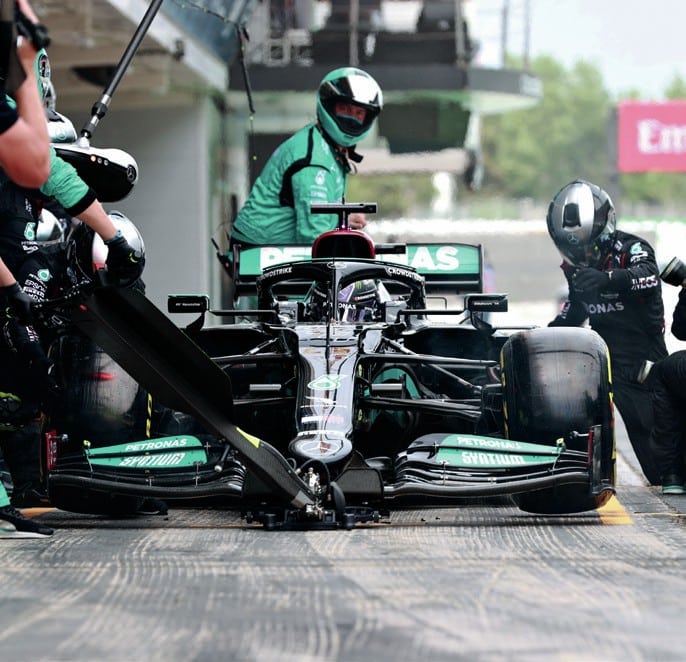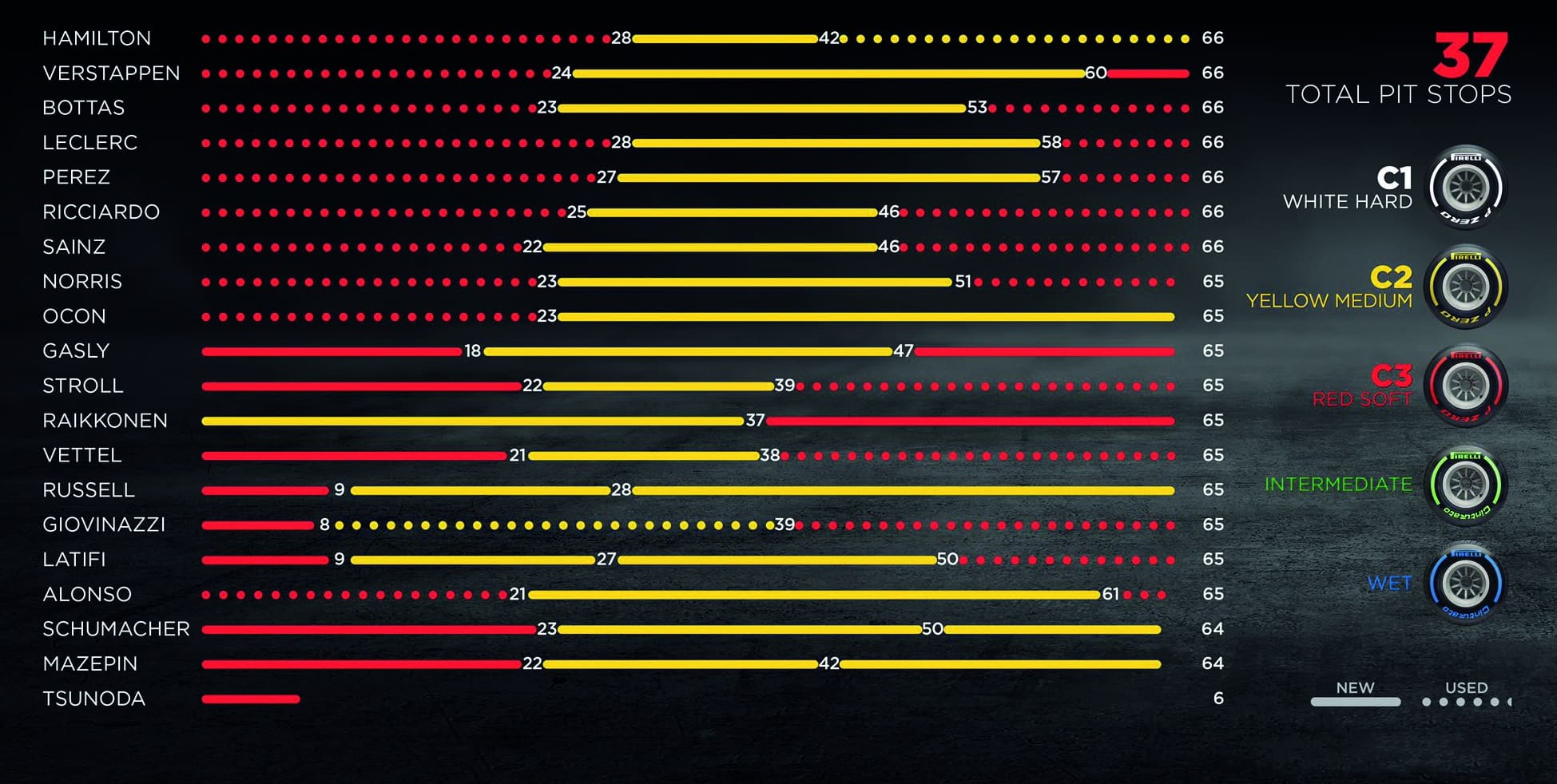Could Mercedes have been beaten at the 2021 Spanish GP?
Tried and tested on tyres: Could Red Bull have countered Mercedes’ Spanish strategy in Barcelona?

Every team went into the Spanish Grand Prix pretty certain it was going to be a one-stop race. It wasn’t. The tyre degradation and wear was more aggressive than had seemed the case during Friday practice and it migrated the race to a two-stop – and that certainly only enhanced Mercedes’ prospects. Lewis Hamilton’s victory over Red Bull’s Max Verstappen drew obvious comparisons with the near-identical pattern seen in the 2019 Hungarian Grand Prix, with Hamilton pitting from close behind the leader, emerging over 20sec behind but his fresher tyres enabling him to catch and pass Verstappen with a few laps to go. You typically need an advantage of at least 1.2sec per lap to be able to overtake around this track. Hamilton on tyres 18 laps newer than Verstappen’s was lapping around 1.5sec faster by the time he caught him and passed.
Could Red Bull have done anything different? If it brought Verstappen in for a second stop immediately after Hamilton, he would have rejoined around 2sec behind. He would have been on fresh soft tyres (because that’s all the team had left) to the fresh mediums of Hamilton. The softs were only around 0.7sec faster initially. So pitting in response to Hamilton would definitely have lost Verstappen track position and made it unlikely he’d be able to pass. Staying out offered the possibility that Hamilton would not make up the 21sec pit stop loss in the remaining 24 laps and that Verstappen could defend in the late stages. So by the time Mercedes made the second stop Red Bull was faced with a choice between certain loss of position (by pitting) or likely loss of position (by staying out).
The third option was to have anticipated Hamilton’s second stop by bringing Verstappen in before. In which case Mercedes would logically have left Hamilton out, leading the race. It would then have been Verstappen’s task to make up the pit stop time loss – but on softs, not the more durable mediums that Hamilton enjoyed. The initial 0.7sec advantage of the softs would quickly fade and be reversed. The performance of the mediums was degrading at the rate of around 0.05sec/lap. Those of the softs was around 0.1sec/lap initially but rising to more like 0.15sec/lap after three laps. Which over the remaining 24 laps would work out as Hamilton’s mediums being around 9sec faster over the stint than the softs Verstappen would have been obliged to use. Could he have caught Hamilton and still had the grip to pass? These numbers tend to back up the belief that he couldn’t. They suggest he’d have caught Hamilton initially at the rate of 1.2sec per lap but that rate would quickly fall until by the time he arrived on Hamilton’s tail he’d have not been able to lap any quicker and would subsequently actually be slower.
So why did Red Bull not have an extra set of mediums? It had based its practice and qualifying around a one-stop, which this race traditionally is. It was a two-stop last year but that was held in the sweltering heat of August. In May, one-stop seemed almost certain. Mercedes believed so too, but not with as much certainty. It recalled that some had struggled to make a one-stop work back in 2019 and so gave itself the insurance policy of an extra set of mediums.
But at the root of Merc’s advantage was a car that did not degrade its tyres as quickly as the Red Bull around a circuit which induces serious heat degradation. It’s believed the high-rake Red Bull’s more aggressive front end tends to impose more sudden loads on the rear tyres, something its shorter wheelbase will also contribute to.

Thinking ahead: Mercedes’ reserve of an extra set of medium tyres allowed Hamilton the flexibility to make a two-stop race work
